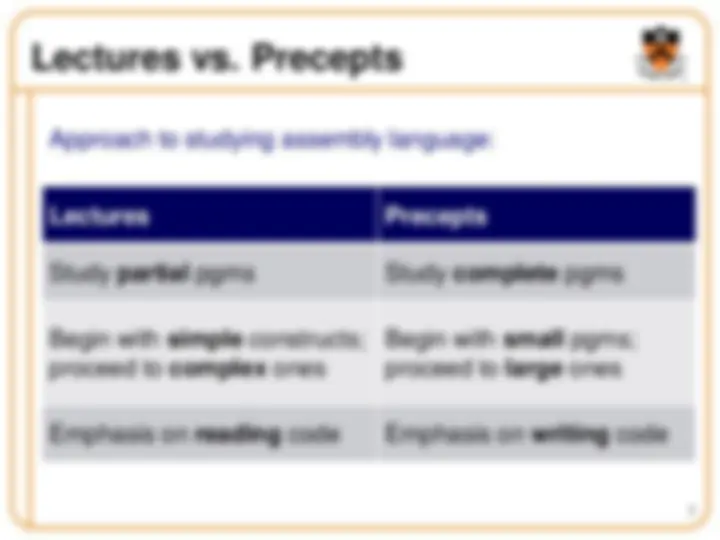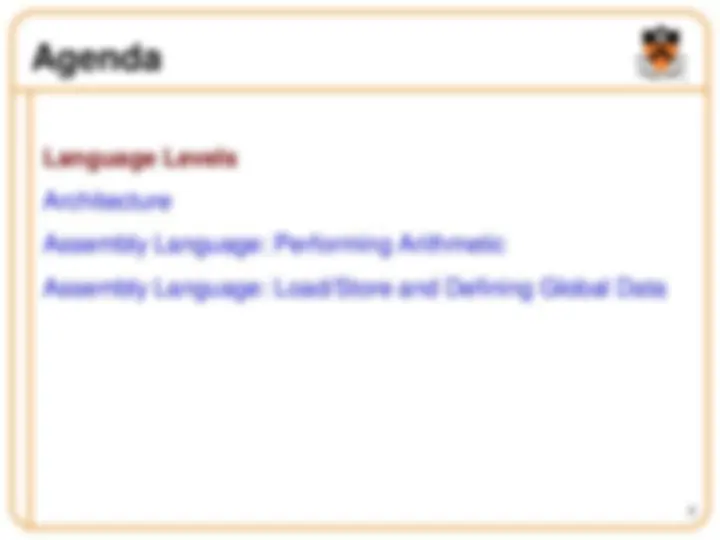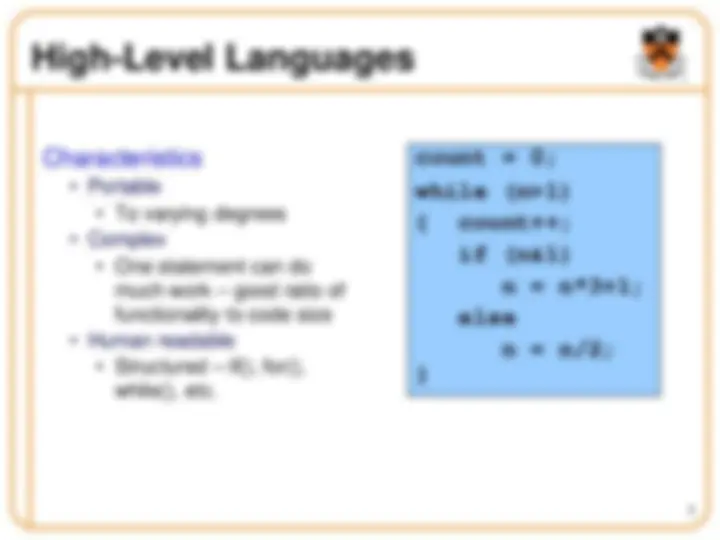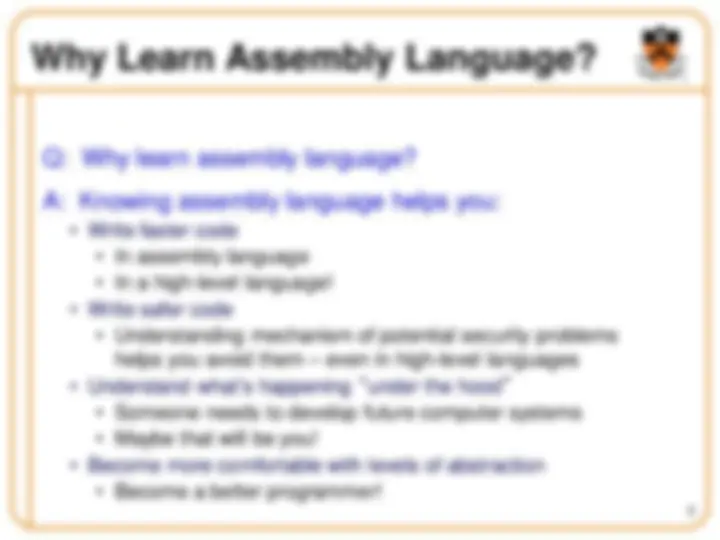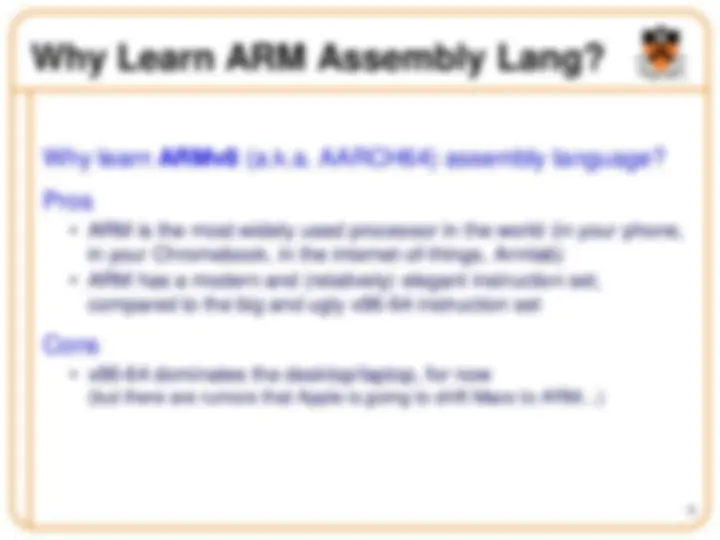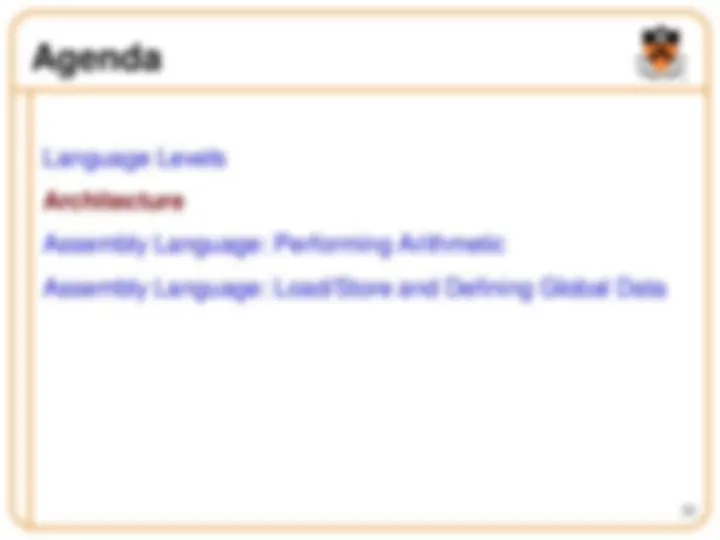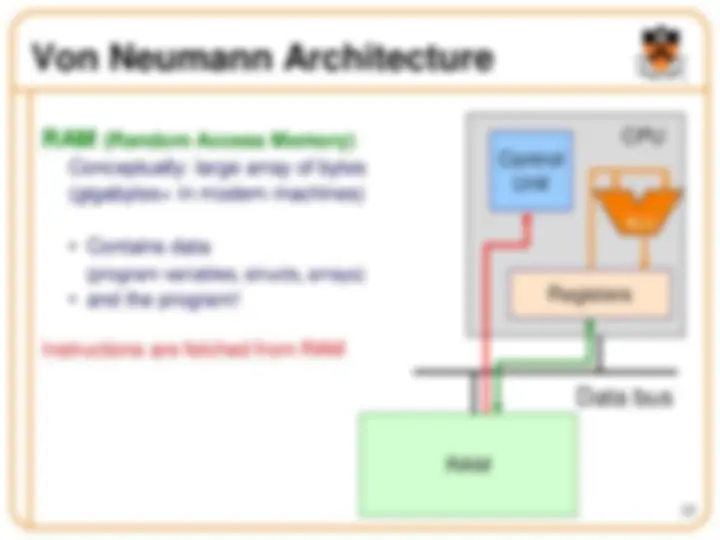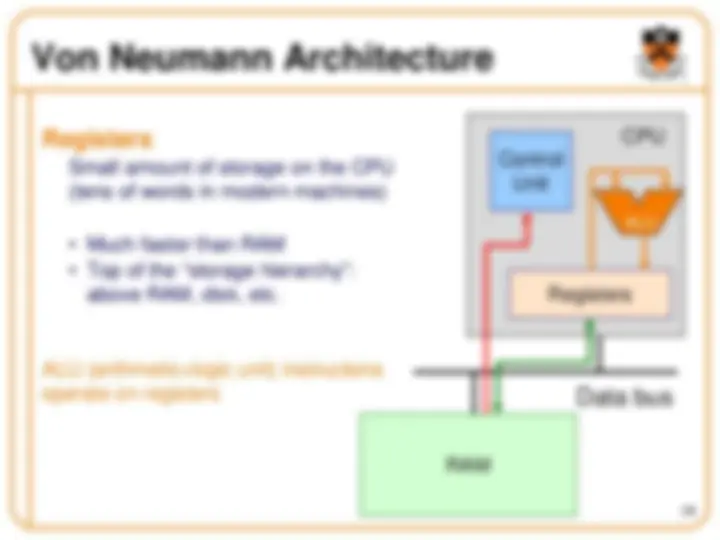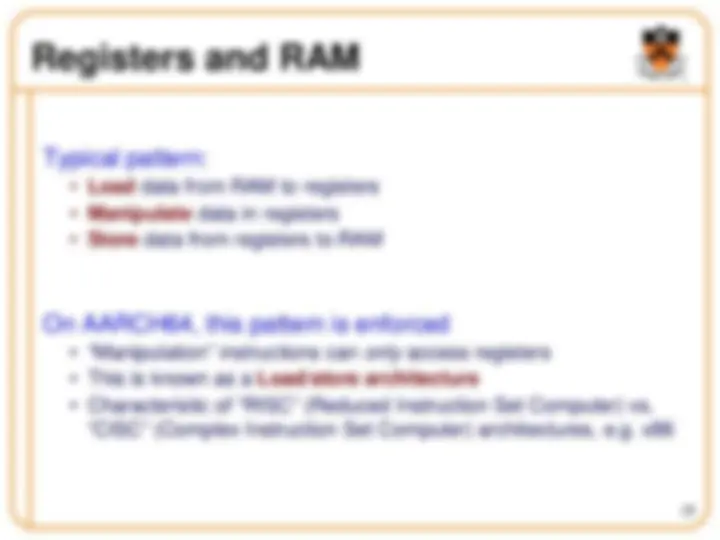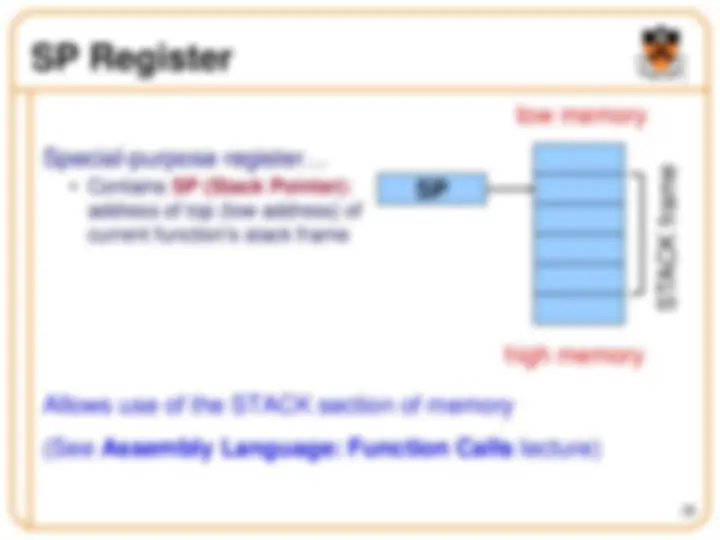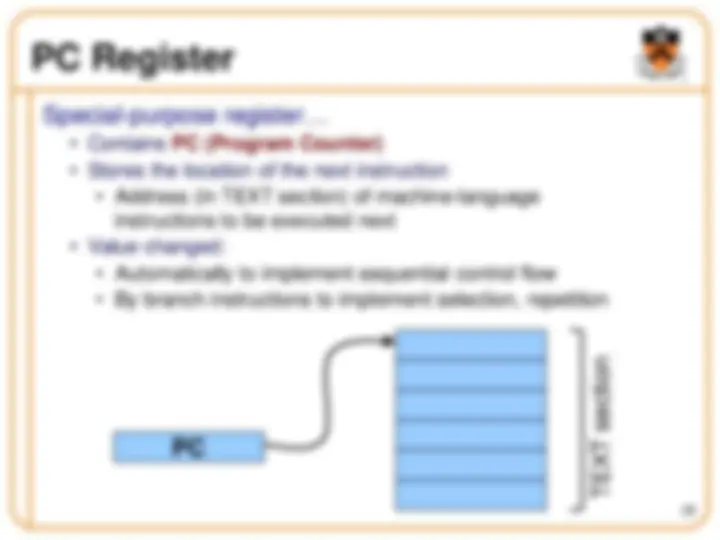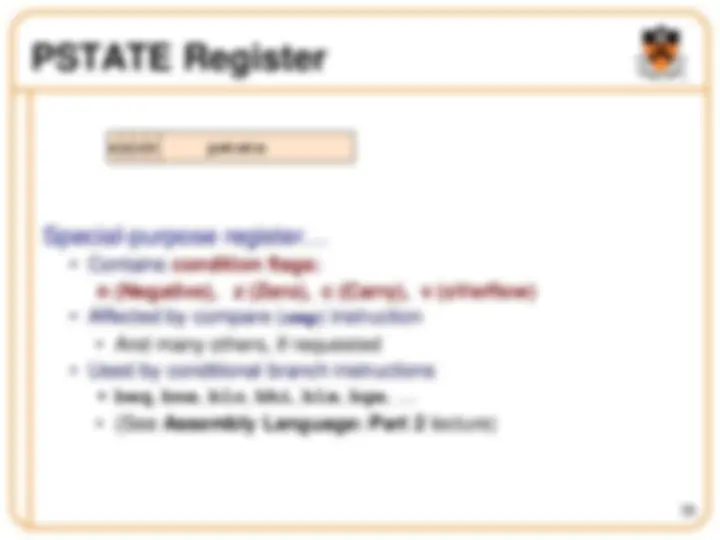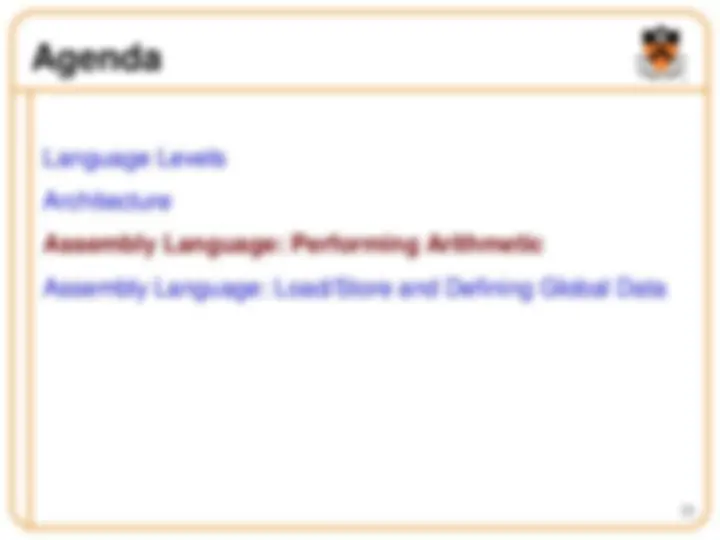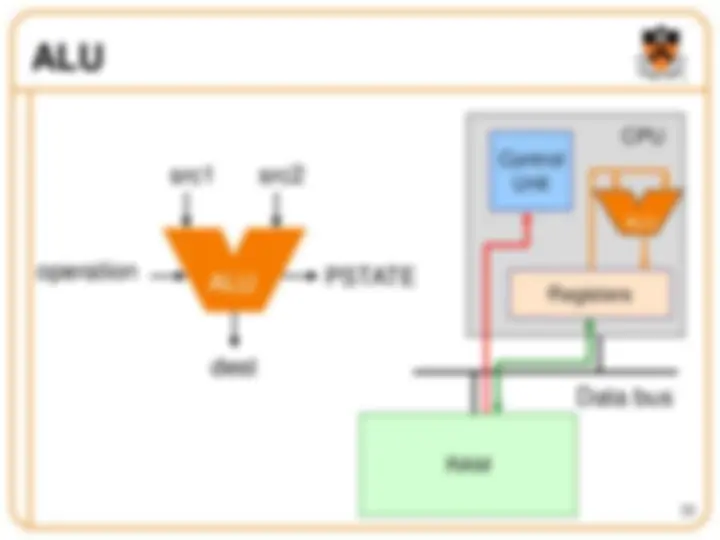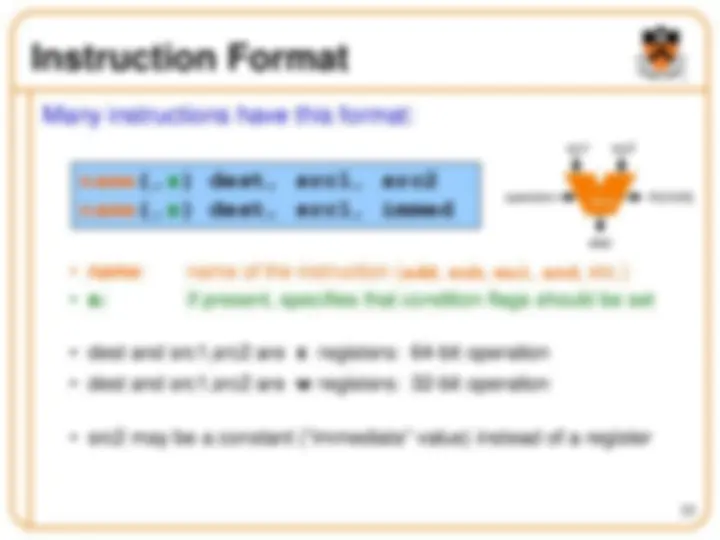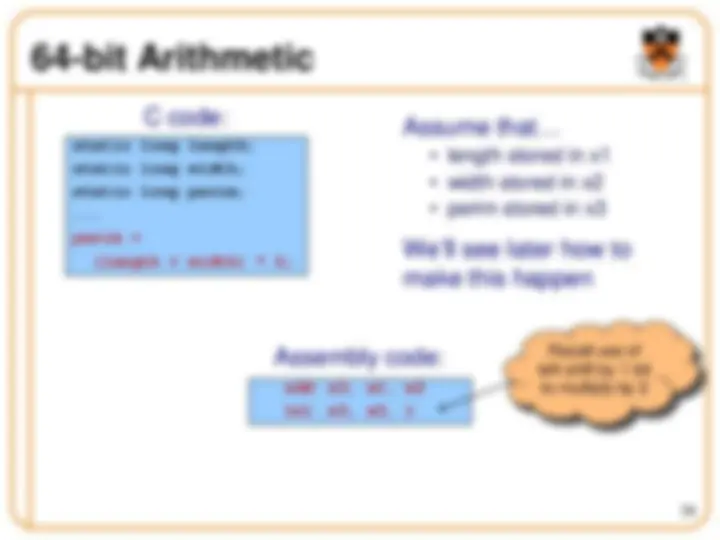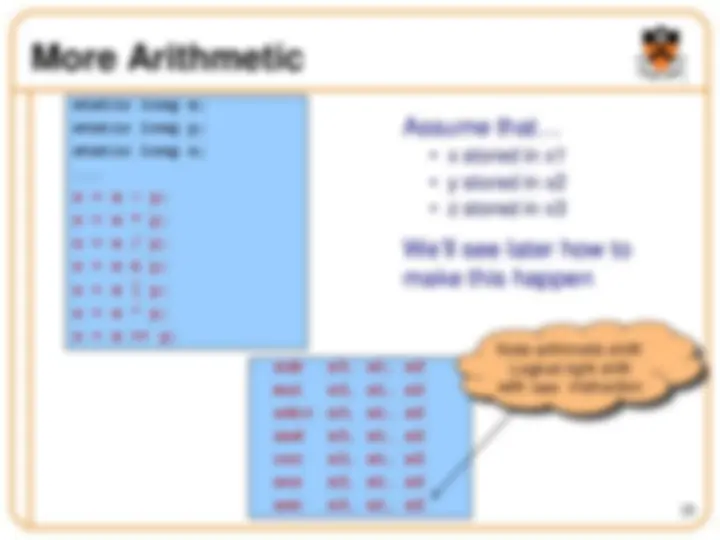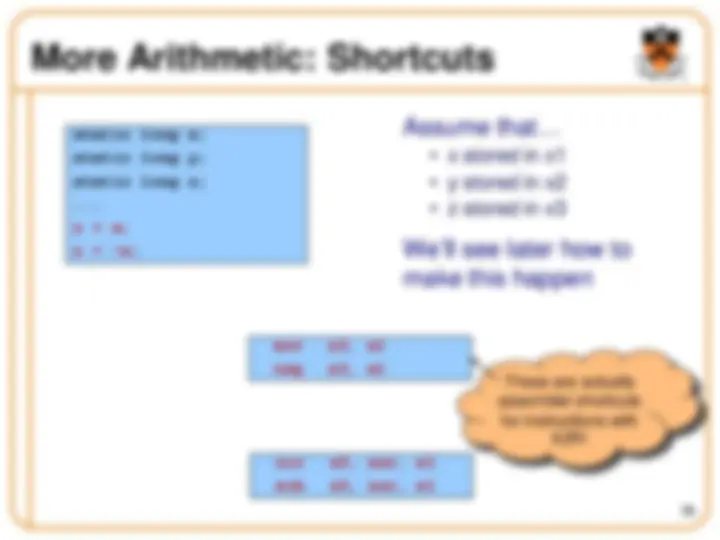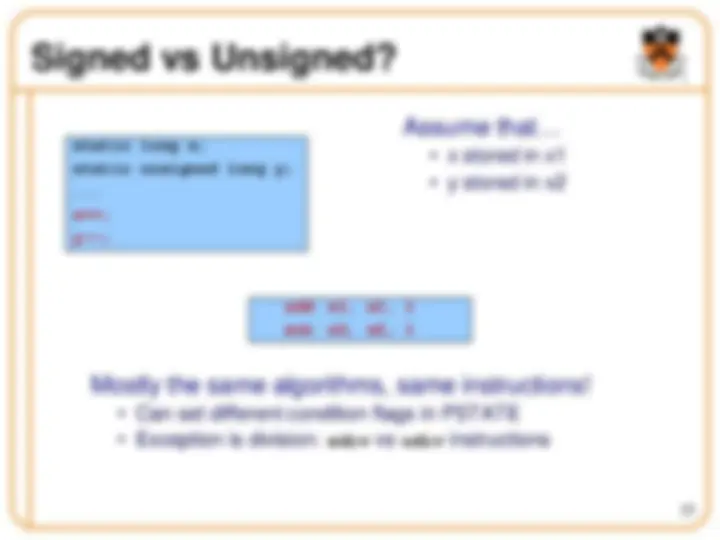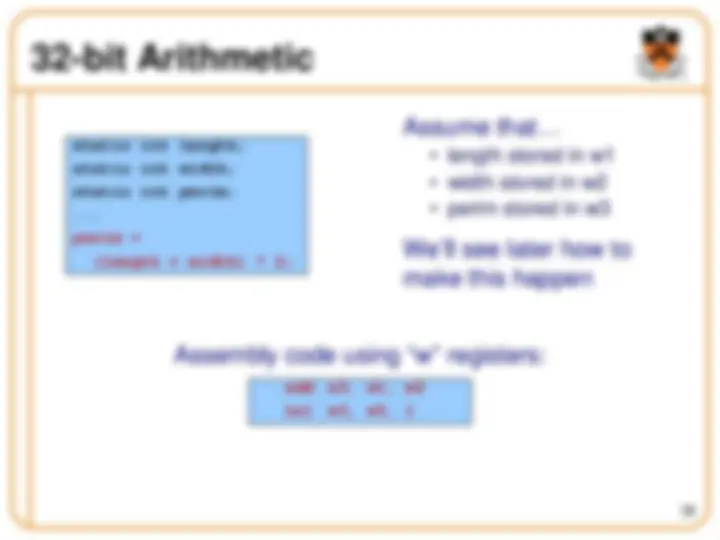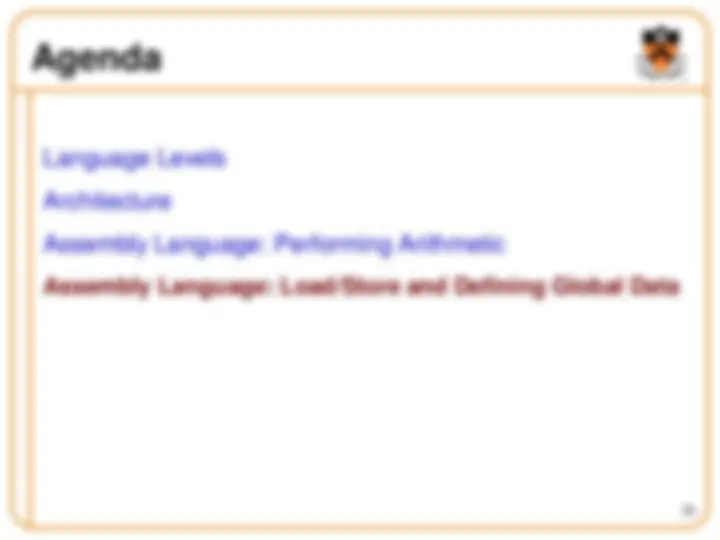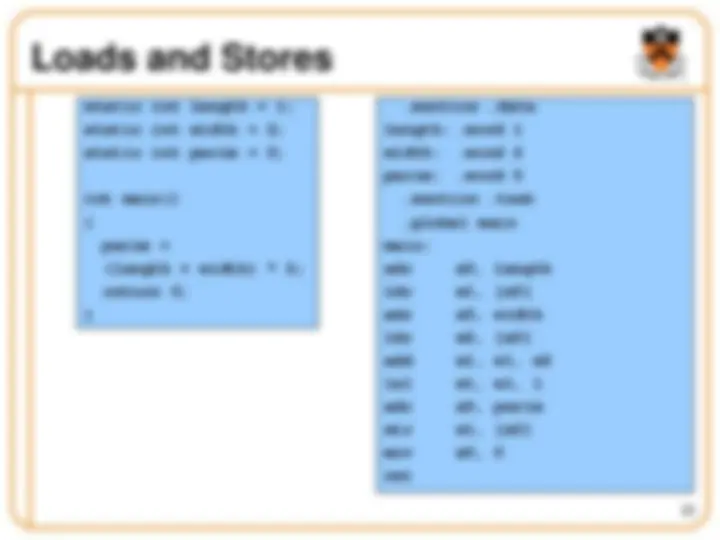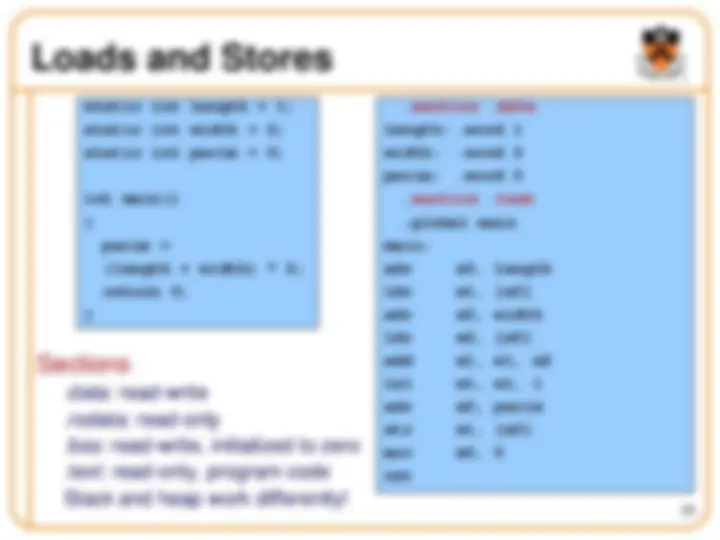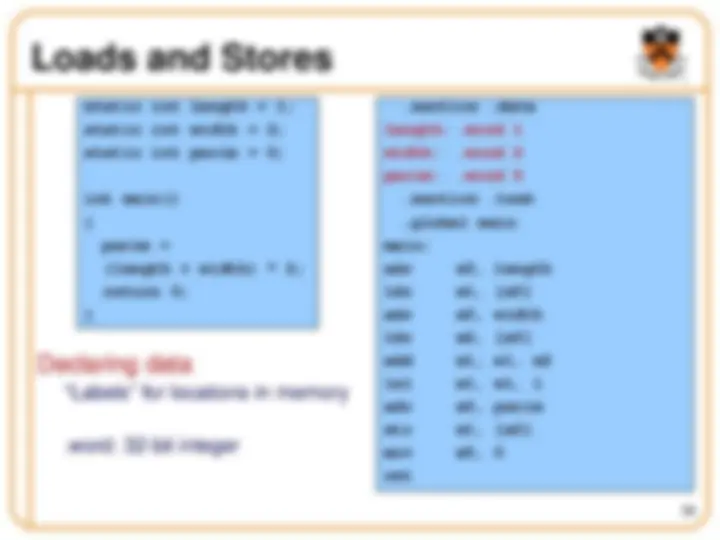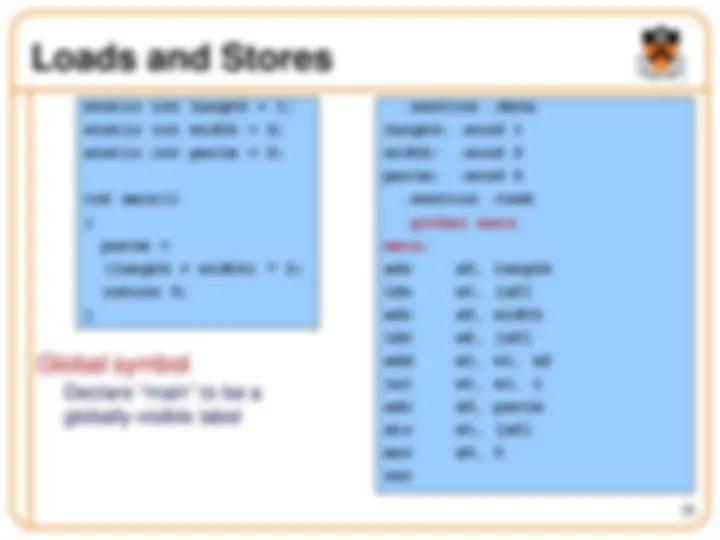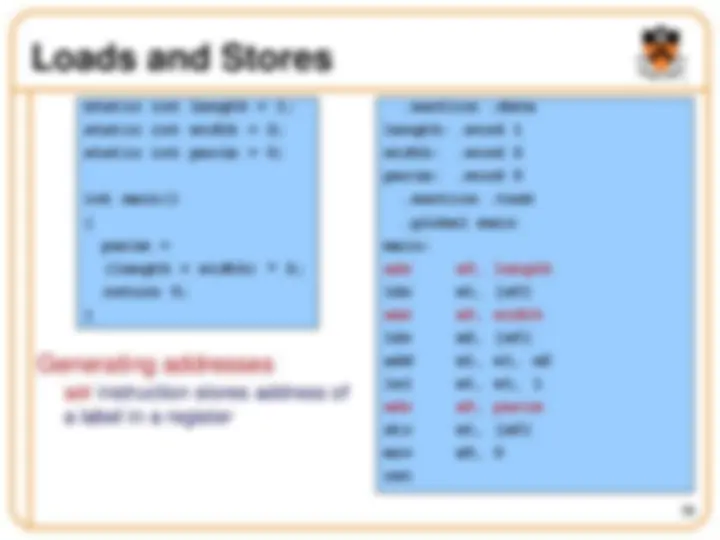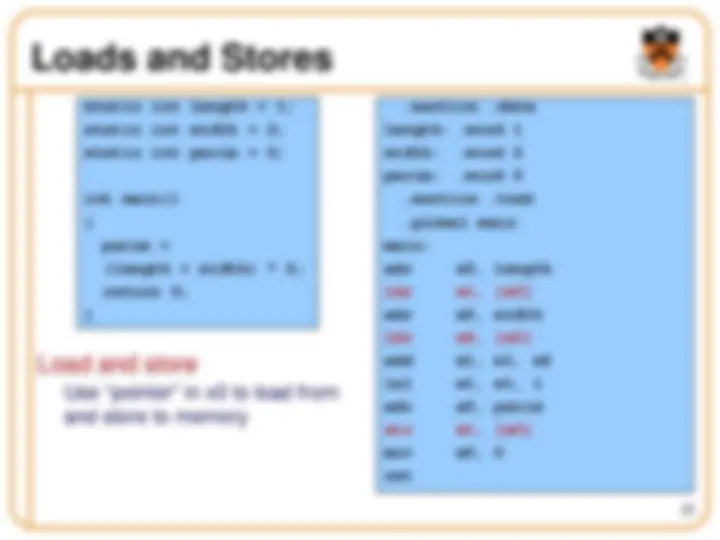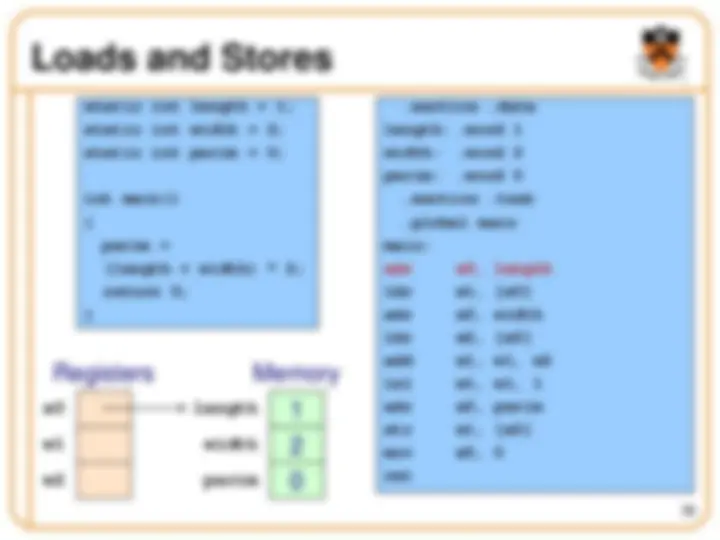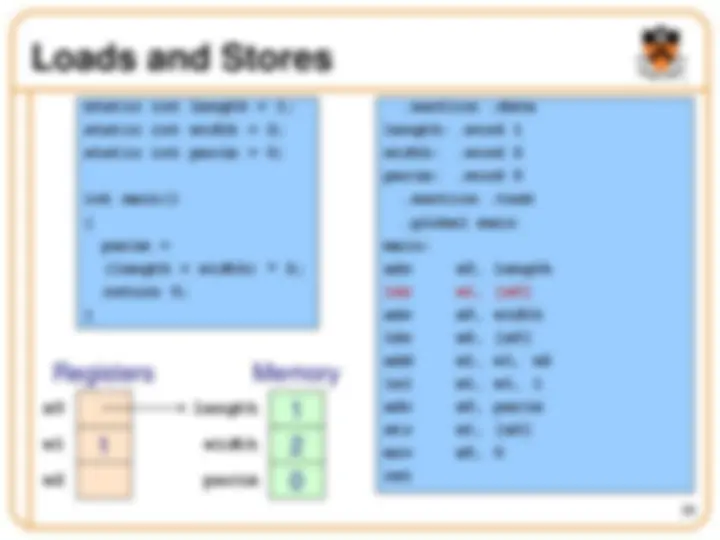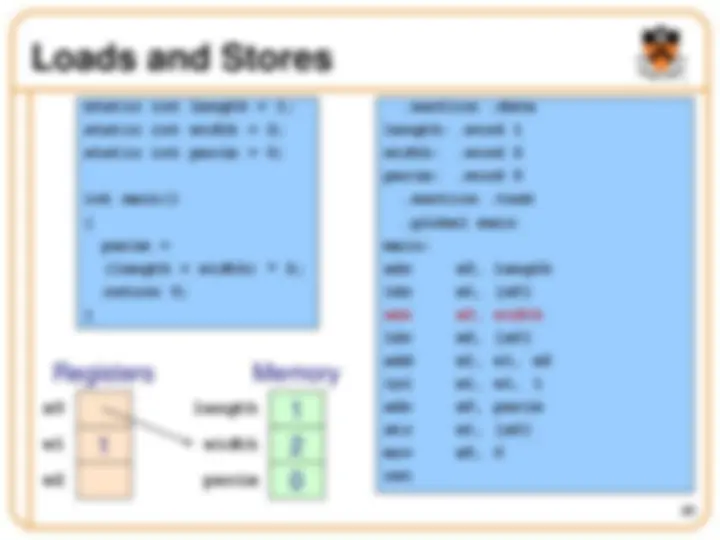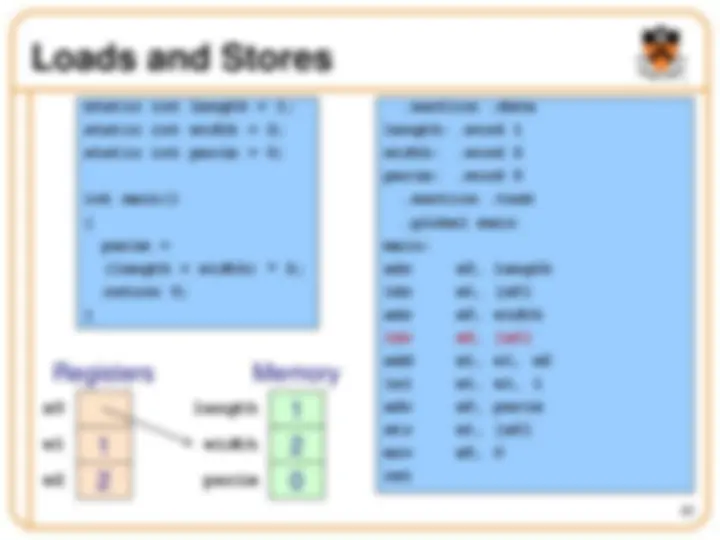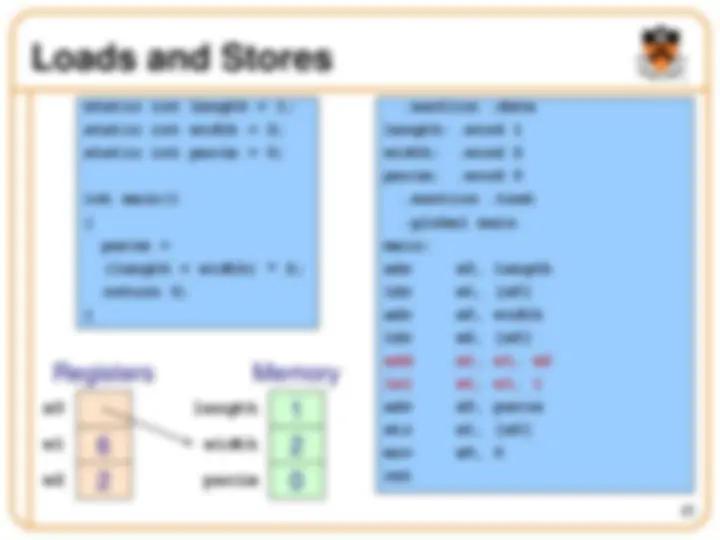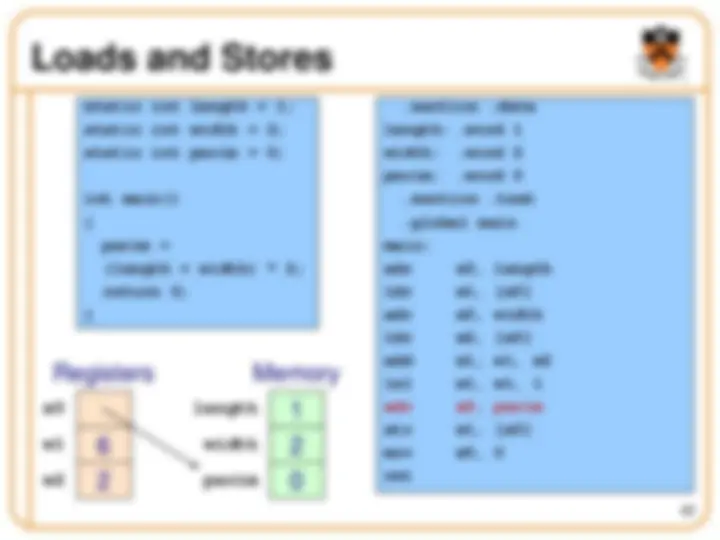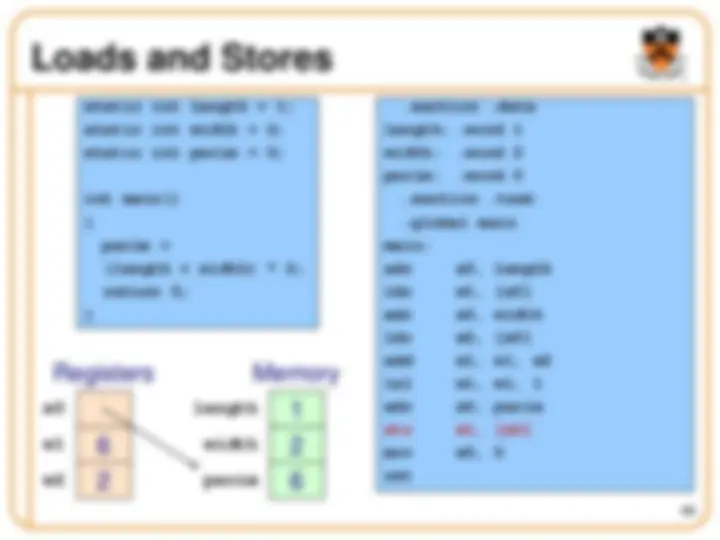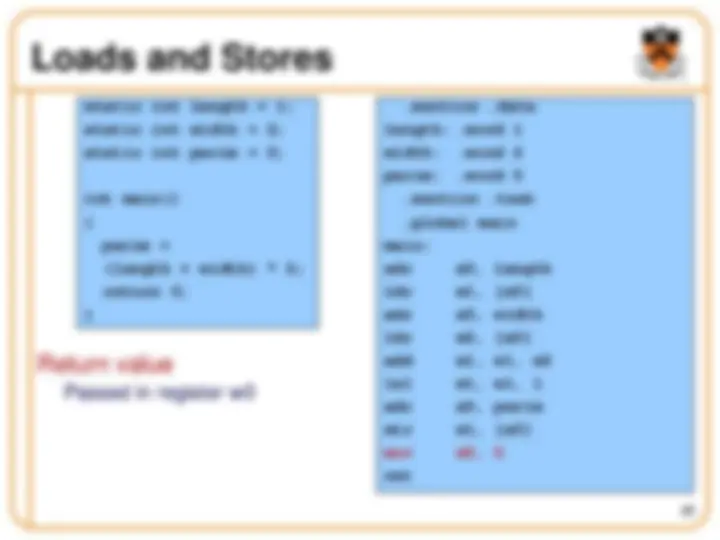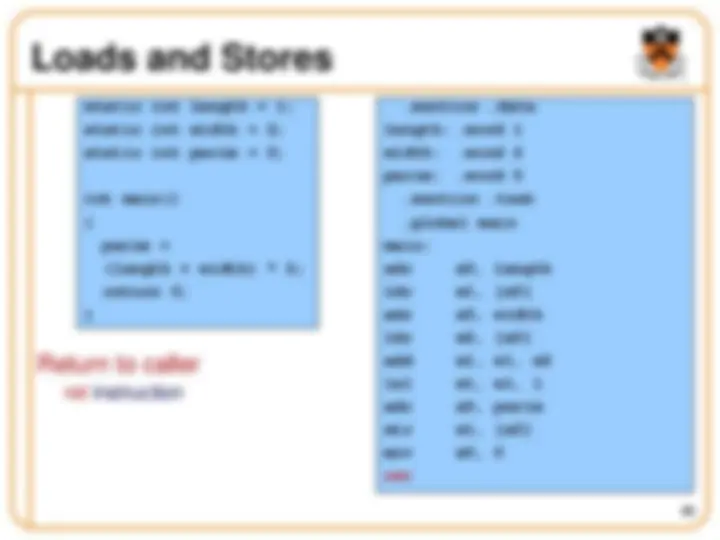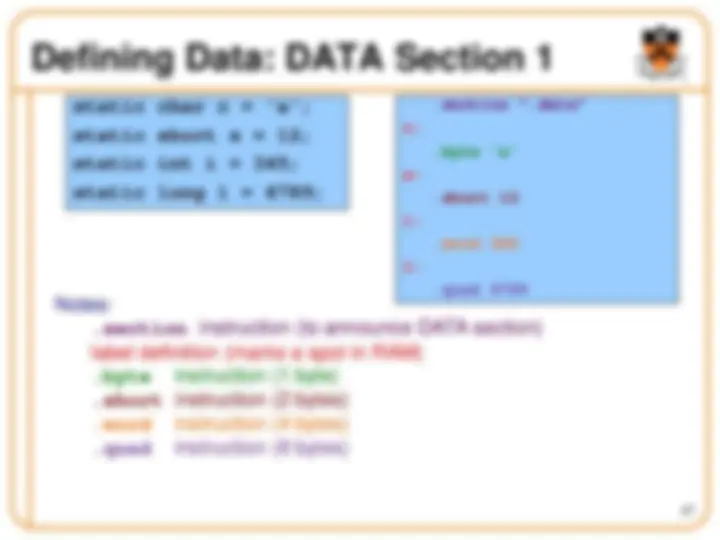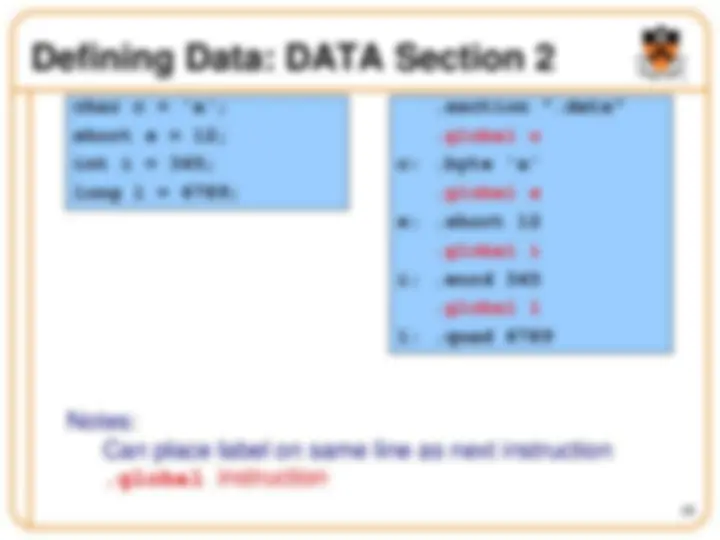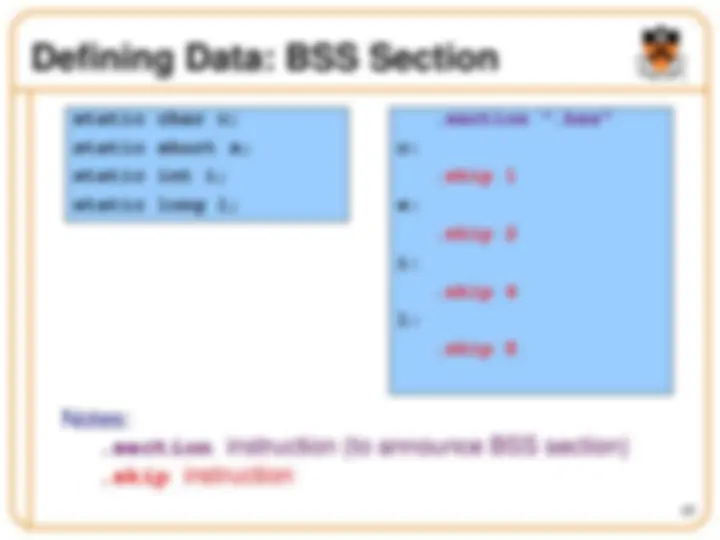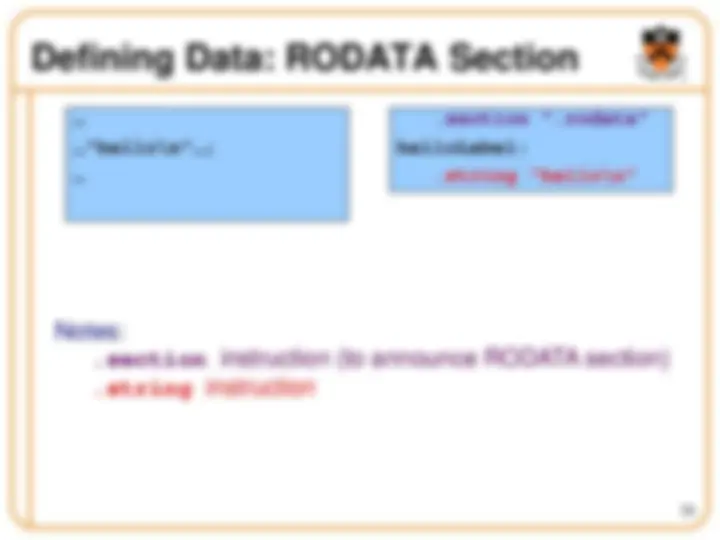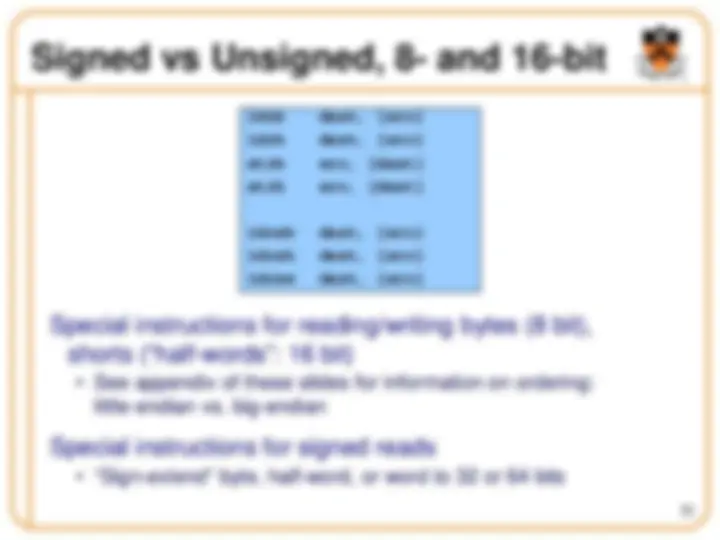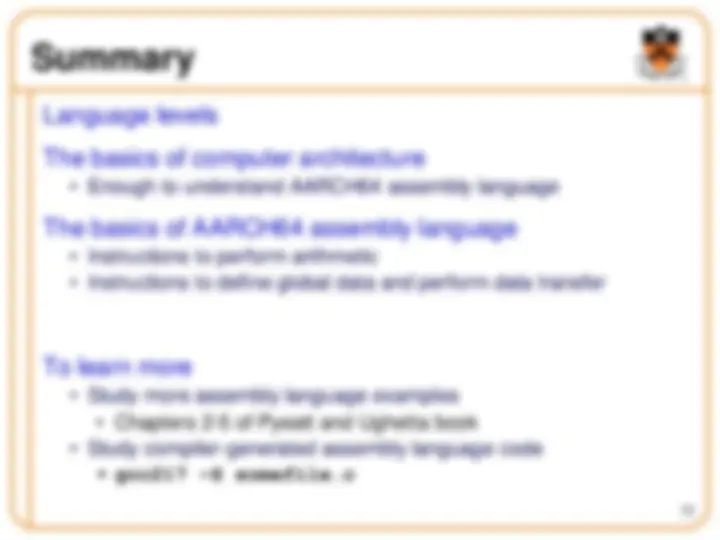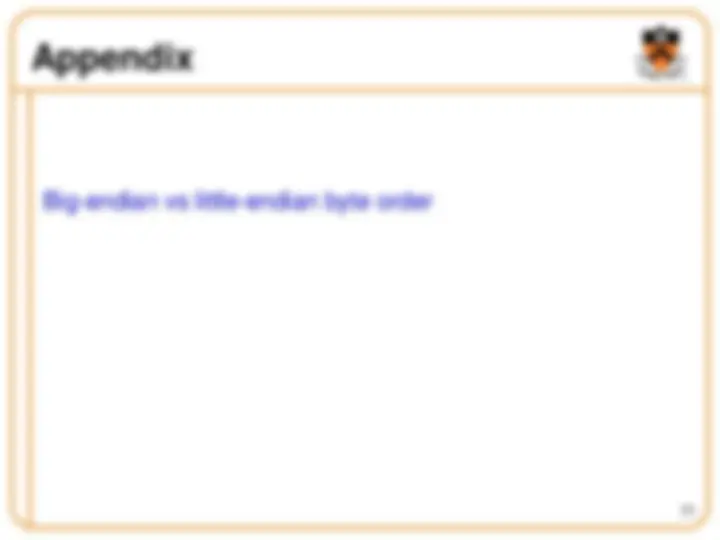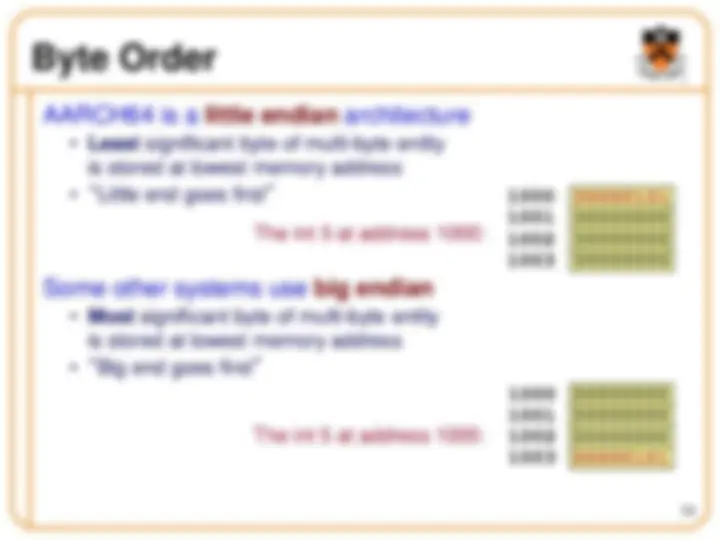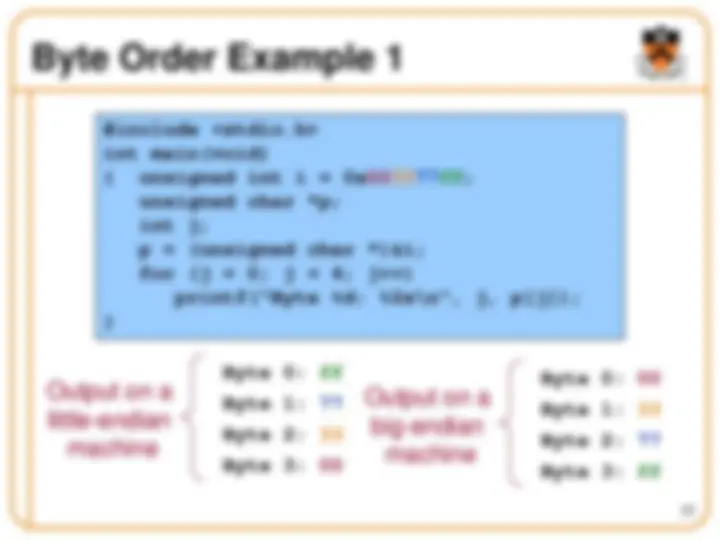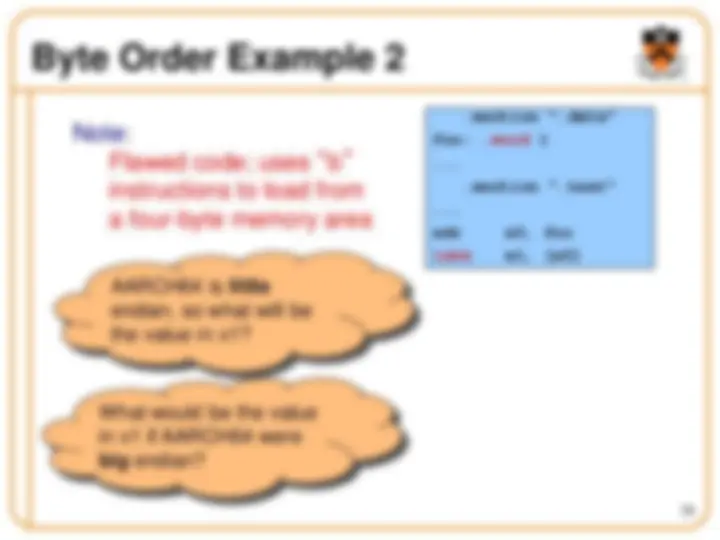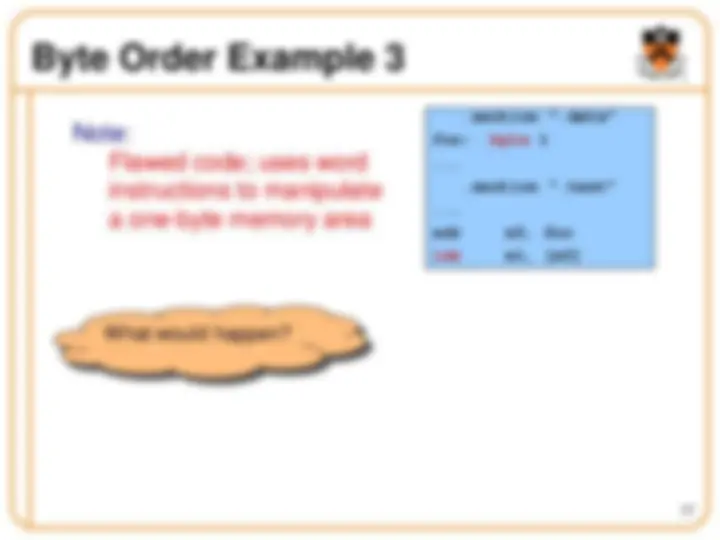Download AARCH64 Assembly Language: Performing Arithmetic and Defining Global Data and more Study notes Architecture in PDF only on Docsity!
Assembly Language:
Part 1
Princeton University
Computer Science 217: Introduction to Programming Systems
First half of the semester: “Programming in the large”
Second half: “Under the hood”
Context of this Lecture
Starting Now Later
C Language
Assembly Language
Machine Language
Application Program
Operating System
Hardware
language levels tour
service levels tour
Agenda
Language Levels
Architecture
Assembly Language: Performing Arithmetic
Assembly Language: Load/Store and Defining Global Data
High-Level Languages
Characteristics
- Portable
- Complex
- One statement can do much work – good ratio of functionality to code size
- Human readable
- Structured – if(), for(), while(), etc.
count = 0;
while (n>1)
{ count++;
if (n&1)
n = n*3+1;
else
n = n/2;
Assembly Languages
Characteristics
- Not portable
- Each assembly lang instruction maps to one machine lang instruction
- Simple
- Each instruction does a simple task
- Human readable (In the same sense that Polish is human readable, if you know Polish.)
ands wzr, w0, # beq else
b endif else:
endif:
asr w0, w0, 1
add w2, w0, w add w0, w0, w add w0, w0, 1
add w0, w0, #
loop: cmp w0, 1 ble endloop
b loop endloop:
mov w1, 0
Why Learn Assembly Language?
Q: Why learn assembly language?
A: Knowing assembly language helps you:
- Write faster code
- In assembly language
- In a high-level language!
- Write safer code
- Understanding mechanism of potential security problems helps you avoid them – even in high-level languages
- Understand what’s happening “under the hood”
- Someone needs to develop future computer systems
- Maybe that will be you!
- Become more comfortable with levels of abstraction
- Become a better programmer!
Agenda
Language Levels
Architecture
Assembly Language: Performing Arithmetic
Assembly Language: Load/Store and Defining Global Data
John Von Neumann (1903-1957)
In computing
- Stored program computers
- Cellular automata
- Self-replication
Other interests
- Mathematics
- Inventor of game theory
- Nuclear physics (hydrogen bomb)
Princeton connection
- Princeton Univ & IAS, 1930-
Known for “Von Neumann architecture (1950)”
- In which programs are just data in the memory
- Contrast to the now-obsolete “Harvard architecture”
Von Neumann Architecture
RAM
Control Unit
CPU
Registers
Data bus
ALU
RAM (Random Access Memory)
Conceptually: large array of bytes (gigabytes+ in modern machines)
- Contains data (program variables, structs, arrays)
- and the program!
Instructions are fetched from RAM
Von Neumann Architecture
RAM
Control Unit
CPU
Registers
Data bus
ALU
Registers
Small amount of storage on the CPU (tens of words in modern machines)
- Much faster than RAM
- Top of the “storage hierarchy”: above RAM, disk, etc.
ALU (arithmetic+logic unit) instructions operate on registers
Registers (ARM-64 architecture)
x0 (^) w
63 31 0
x1 (^) w
x29 (FP) (^) w x30 (LR) (^) w
xzr (all zeros) (^) wzr sp (stack pointer)
pc (program counter)
n z c v pstate
General-Purpose Registers
X0 .. X
- 64-bit registers
- Scratch space for instructions, parameter passing to/from functions, return address for function calls, etc.
- Some have special purposes defined in hardware (e.g. X30) or defined by software convention (e.g. X29)
- Also available as 32-bit versions: W0 .. W
XZR
- On read: all zeros
- On write: data thrown away
PC Register
Special-purpose register…
- Contains PC (Program Counter)
- Stores the location of the next instruction
- Address (in TEXT section) of machine-language instructions to be executed next
- Value changed:
- Automatically to implement sequential control flow
- By branch instructions to implement selection, repetition
PC
TEXT section
PSTATE Register
Special-purpose register…
- Contains condition flags: n (Negative), z (Zero), c (Carry), v (oVerflow)
- Affected by compare ( cmp ) instruction
- And many others, if requested
- Used by conditional branch instructions
- beq , bne , blo , bhi , ble , bge , …
- (See Assembly Language: Part 2 lecture)
n z c v pstate

